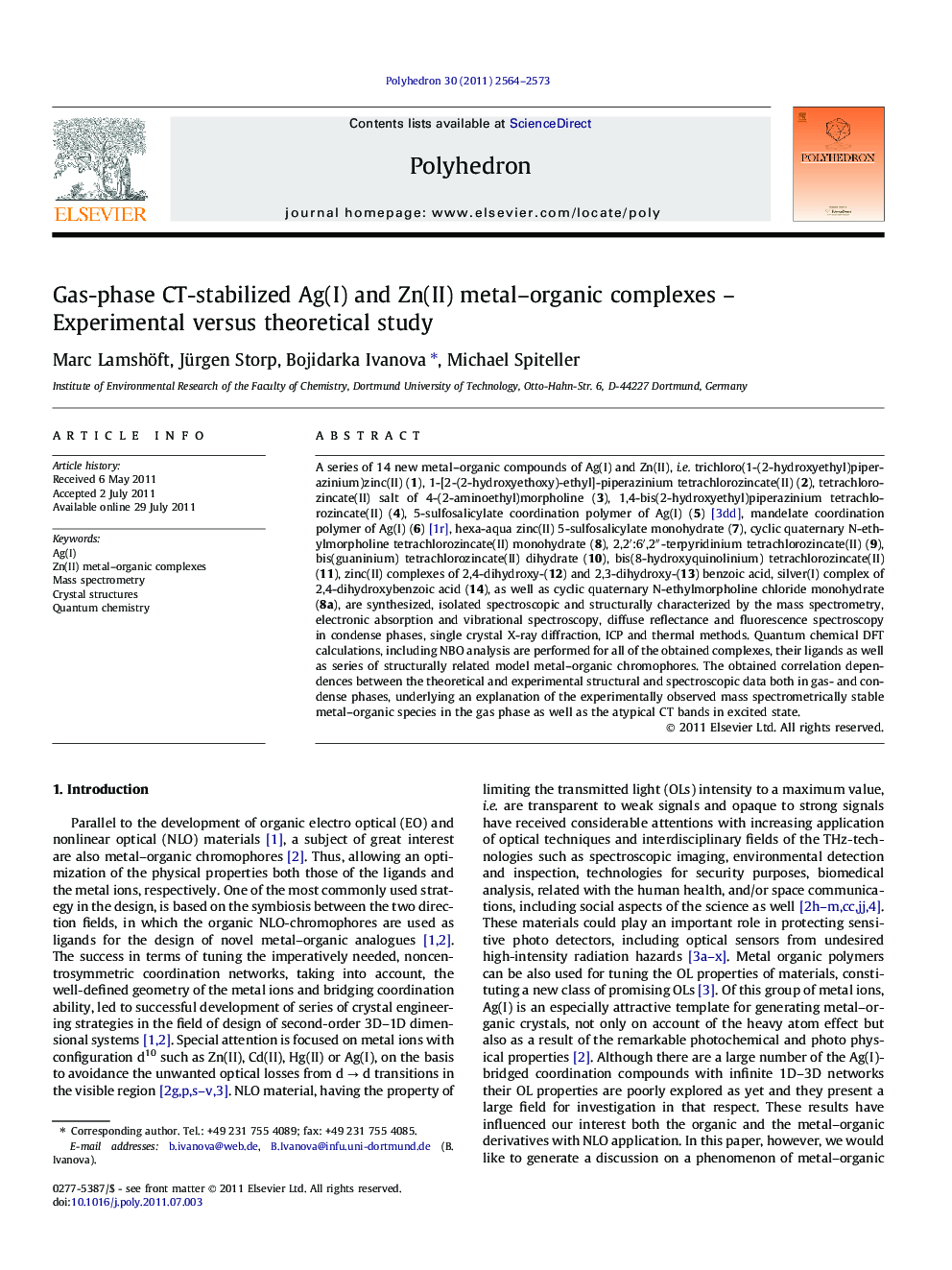| Article ID | Journal | Published Year | Pages | File Type |
|---|---|---|---|---|
| 1334831 | Polyhedron | 2011 | 10 Pages |
A series of 14 new metal–organic compounds of Ag(I) and Zn(II), i.e. trichloro(1-(2-hydroxyethyl)piperazinium)zinc(II) (1), 1-[2-(2-hydroxyethoxy)-ethyl]-piperazinium tetrachlorozincate(II) (2), tetrachlorozincate(II) salt of 4-(2-aminoethyl)morpholine (3), 1,4-bis(2-hydroxyethyl)piperazinium tetrachlorozincate(II) (4), 5-sulfosalicylate coordination polymer of Ag(I) (5) [3dd], mandelate coordination polymer of Ag(I) (6) [1r], hexa-aqua zinc(II) 5-sulfosalicylate monohydrate (7), cyclic quaternary N-ethylmorpholine tetrachlorozincate(II) monohydrate (8), 2,2′:6′,2″-terpyridinium tetrachlorozincate(II) (9), bis(guaninium) tetrachlorozincate(II) dihydrate (10), bis(8-hydroxyquinolinium) tetrachlorozincate(II) (11), zinc(II) complexes of 2,4-dihydroxy-(12) and 2,3-dihydroxy-(13) benzoic acid, silver(I) complex of 2,4-dihydroxybenzoic acid (14), as well as cyclic quaternary N-ethylmorpholine chloride monohydrate (8a), are synthesized, isolated spectroscopic and structurally characterized by the mass spectrometry, electronic absorption and vibrational spectroscopy, diffuse reflectance and fluorescence spectroscopy in condense phases, single crystal X-ray diffraction, ICP and thermal methods. Quantum chemical DFT calculations, including NBO analysis are performed for all of the obtained complexes, their ligands as well as series of structurally related model metal–organic chromophores. The obtained correlation dependences between the theoretical and experimental structural and spectroscopic data both in gas- and condense phases, underlying an explanation of the experimentally observed mass spectrometrically stable metal–organic species in the gas phase as well as the atypical CT bands in excited state.
Graphical abstractA series of 14 new metal–organic compounds of Ag(I) and Zn(II), are synthesized, isolated spectroscopic and structurally characterized by the mass spectrometry, electronic absorption and vibrational spectroscopy, diffuse reflectance and fluorescence spectroscopy in condense phases, single crystal X-ray diffraction, ICP and thermal methods. Quantum chemical DFT calculations, including NBO analysis are performed for all of the obtained complexes, their ligands as well as series of structurally related model metal–organic chromophores. The obtained correlation dependences between the theoretical and experimental structural and spectroscopic data both in gas- and condense phases, underlying an explanation of the experimentally observed mass spectrometrically stable metal–organic species in the gas phase as well as the atypical CT bands in excited state.Figure optionsDownload full-size imageDownload as PowerPoint slideHighlights► Metal–organics in THz-technology. ► IR-, Raman, THz-method. ► Environmental inspection.
